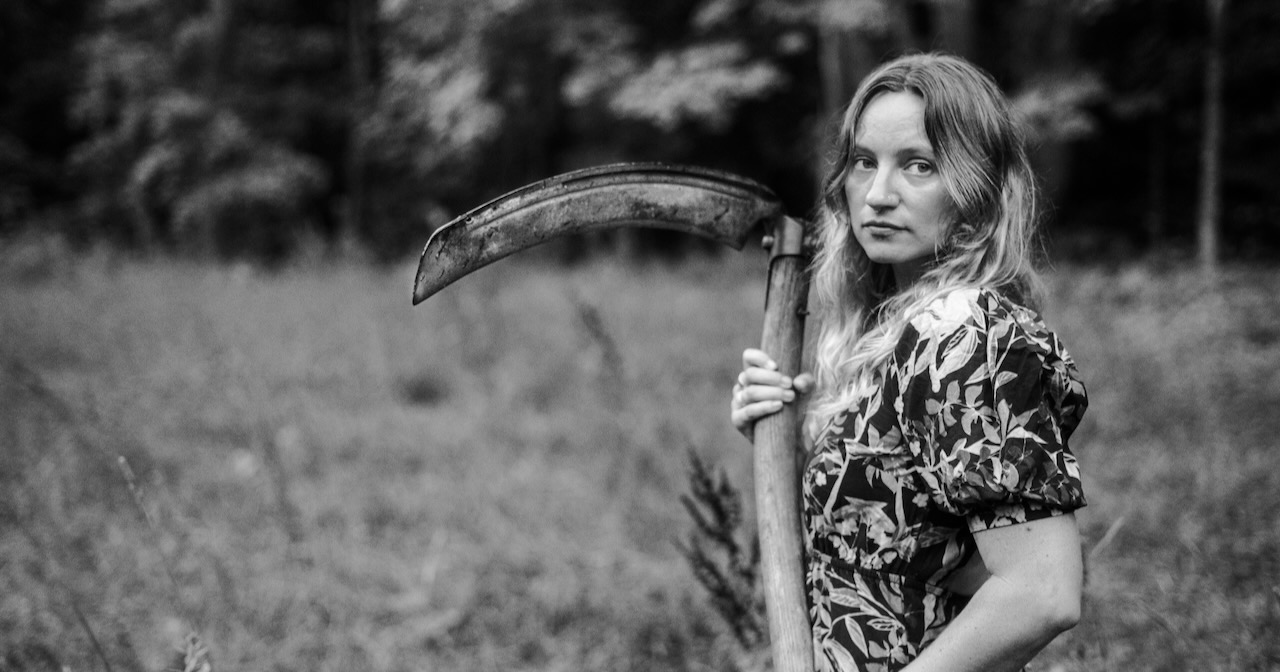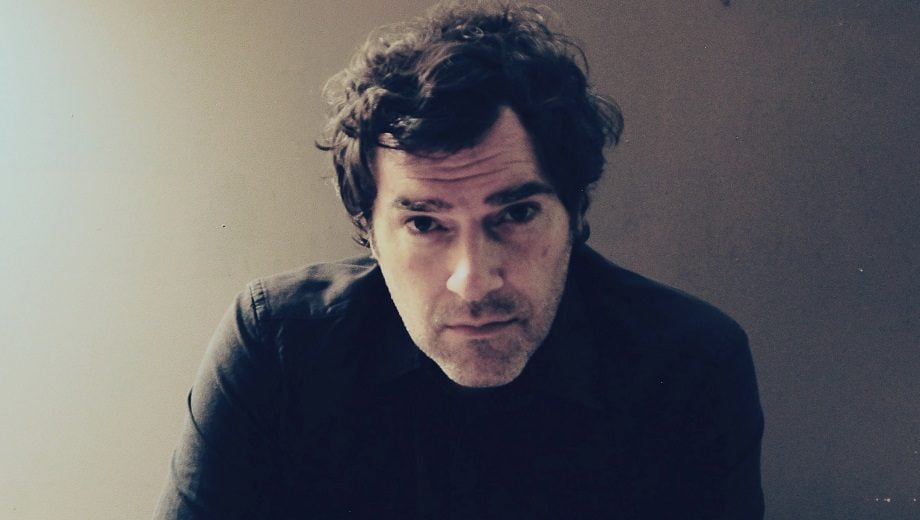Carolyn Kendrick is known among folk and roots fans as a fiddler with legitimate trad bona fides and as a singer-songwriter prone to introspective, observational songwriting. In the podcast zone she has carved a place as producer, researcher, and composer for several shows, including the award-winning You’re Wrong About podcast hosted by Sarah Marshall and Michael Hobbes.
In fact, it was while Kendrick was researching the “Satanic Panic” of the 1980s for an episode of You’re Wrong About that she became obsessed with cultural panics in general. That obsession ultimately led to her haunting new album, Each Machine, which released December 6 on Occulture Records.
Last month, from her home in Los Angeles, Kendrick explained the album’s genesis.
“I’ve been thinking a lot about lineage and tradition lately,” she says. “… I’ve been thinking of all of these songs that have these deep traditional roots, that I’ve been listening to and learning and singing around campfires with, you know, friends at bluegrass festivals and folk festivals for years and years and years.”
The songs that were standing out to her all carried some darkness, a little shadow of the devil. She started wondering what might happen if she decided to reinterpret some of them in a way that asserted her personal instincts. “That includes things like more electric instrumentation, more sound design, more world building,” she says. “Not for it to sound inflated, but what if it was part of a more extended concept rather than just, you know, individual songs?”
To explore these curiosities, she enlisted the collaboration of her friend, multi-instrumentalist, and fellow Berklee grad Isa Burke (Aoife O’Donovan, Mountain Goats) to help her flesh out the sonic landscapes that are sure to envelop Each Machine’s listeners in a creepy, devilish fog.
Indeed, the album’s swallowing darkness even pervades on deceptively welcoming songs like “Sumer (Sing Cuckoo)” –sung here in the traditional round, a cappella except for some decidedly spooky timpani wallops. As a result, and in the context of so many songs about the devil, the duo’s approach feels particularly untouchable, like the story of a photograph of a memory of lighter times.
Then again, Kendrick felt compelled to include it amid her exploration of panic. As if to say: Perhaps the light is gone for now, but the nature of summer is that it returns.
To that end, she notes: “It was really, really fun to be able to take these older songs that have such a rich lineage and reinterpret them with the lens of … the issues that we’re going through as a people right now.”
This side of the 2024 election, most topical interpretations are probably incidental – she wrote the album long before votes were cast. But, while Each Machine implies a general warning about what happens when humans become wrapped up in an historical moment, it also becomes specific, for at least one track, on the topic of women’s health.
Track nine is a spoken-word piece Kendrick has titled “Sugar and Spice.” For fifty-five seconds, the listener is treated to a collection of recordings about what it is to be a woman in America. From the nursery school rhyme from which the track gets its name to a news report about the overturning of Roe v. Wade, the track ends with a distant crowd of protestors chanting about abortion. This is followed by the artist’s take on the trad song “Wind and Rain,” about a pair of sisters competing for a man’s attention: In pursuit of her prize, the one shoves the other into a river to drown.
Kendrick isn’t wasting anyone’s time being subtle about her views here. Then again, where’s the room for subtlety amidst panic?
As The New York Times reported in 1994, the Satanic Panic encompassed “12,000 accusations of group cult sexual abuse based on satanic ritual.” The same Times article clarified that none of these events seem to have actually occurred, but the fear they provoked in the public was definitely real. As a folk singer drawn to moments of cultural import, digging into the Satanic Panic caused Kendrick to consider the way these “panics” might be connected.
That she tied in songs about the devil; ruminations on a view of Earth from space; what womanhood requires of us; and even the poetry of Rainer Maria Rilke means this is not an album meant to be background music. To be sure, the musicianship and arrangements are lovely, but the spoken word bits are necessarily jarring.
Over and over, the disc interrupts itself with interludes that pull one’s attention back – from feeling to meaning – before moving into another song. This tennis match between the heart and the head reaches its apex about halfway in, when Kendrick pivots between two separate recordings, “Are You Washed” and “In the Blood.” Between them sits a spoken word piece (the title track) which feels intimidating and disorienting.
Her decision to include two interpretations of the one song was inspired by Naomi Klein’s Doppleganger. That book, Kendrick explains, “really changed how I’m thinking about how we receive information.”
“As Americans,” she adds, “our media diets are so different and atomized from one another. And there’s also this confusion within the conspiracy landscape that we live in right now. … How can we be receiving the same information and interpreting it so differently? … [So that song is] an experiment. How do I approach one thing and look at it from all different angles? And how will that make me feel differently?”
Indeed, Each Machine is clearly trying to get through a whole lot of questions. And in just eight songs, it somehow achieves its goal. In addition to the questions already mentioned, there’s the Satanic Panic of it all. What, then, does fear – of the devil, of freedom, of technology, of one another – teach us?
As she sends Each Machine out into the world, Kendrick is clear that the lesson she learned is that she’s grateful to have a creative outlet to help her find light in darkness.
“I had been going through all of this really difficult subject matter,” she says. “… I had so many feelings of distress and worry – and also of hope. [I was in] this flurry of all the big emotions that we go through [when] we’re dealing with reality. I needed a place to put all of my feelings about moral panics, I guess.”
Photo Credit: Alex Steed

